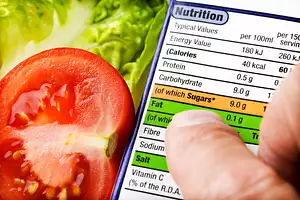With heart attacks being one of the deadliest killers known, preventing them is very important. New health recommendations outline how much sodium a person should consume in order to help prevent heart attack and stroke.
Sodium intake is often to blame for heart attacks, according to the National Heart Foundation of Australia.
According to a recent study, reducing the consumption of sodium that is a major ingredient in many processed foods may prevent nearly 6000 heart attacks per year, and nearly 5000 strokes.
Because sodium intake can significantly affect blood pressure, reducing the levels that are consumed can have dramatic results on a person’s health, and reduce the risk of heart attack and stroke.
Barbara Eden, a dietician with the Heart Foundation, stresses that “Excessive salt consumption is a major killer and by cutting our salt intake we can prevent thousands of unnecessary deaths from heart disease and stroke.”
With nearly a third of all Australians, approximately 3.5 million people total, the number of deaths related to hypertension is staggering.
The Heart Foundation recommends regular blood pressure screenings to monitor your health. There are not always obvious signs or symptoms of having high blood pressure until it becomes a very serious health issue.
Because the average Australian consumes approximately 9 grams of salt per day, the recommendations are for serious decreases in sodium intake for better health outcomes.
The Heart Foundation is suggesting that intake should be limited to less than 6 grams per day (one teaspoon) for people with normal blood pressure levels, and only 4 grams for those with any pre-existing high blood pressure or hypertension or any heart disease.
At the current rate, most Australian adults are consuming more than 3kg of salt each year, triple the amount that is recommended. Even children have a sodium intake that is far higher than the recommendations, at more than 2kg per year.
When healthy amounts are explained, many are shocked to discover how much sodium is in the regular, everyday foods—and that does not come from the shaker on the dinner table!
A new program from the Heart Foundation, called “Halt Hidden Salt” is geared toward lowering the amounts of sodium in foods when they are processed.
In addition, public education programs, better food labelling and tighter regulations on food production are expected to help Australians lower their salt intake and prevent thousands of heart attacks and strokes per year.
Says Eden, “Australia is making progress but like many other countries we still have a long way to go if we are to meet the new World Health Organisation target of reducing salt consumption by 30 per cent by 2025.”
SOURCES: https://www.ausfoodnews.com.au/2014/03/10/cutting-salt-could-stop-5800-heart-attacks-national-heart-foundation-australia.html;https://www.heartfoundation.org.au/healthy-eating/Pages/default.aspx










Comments